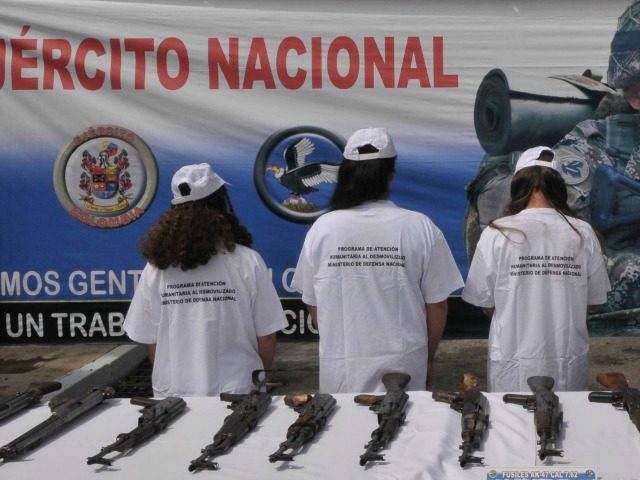Hide and seek is meant to be a child’s game. Counting to ten should only take a few seconds and finding a child hiding under a table usually takes just a couple of minutes of teasing.
But what happens when those seconds become years and hiding turns into disappearing and seeking evolves into negotiations with armed rebels? Playing a child’s game in Colombia is neither an innocent nor a fun affair.
Colombia has suffered a chronic war against the Revolutionary Armed Forces of Colombia (FARC) since 1964, when the group was formed. The country’s largest rebel group has killed more than 220,000 people, while more than one out of every 10 Colombians have been forced from their homes.
Out of the approximate 15,500 members of the guerrilla movement, an estimated 7,500 are child soldiers who were often kidnapped or forced into labor. Children have always played a central role in the operations of the FARC. The group uses girls and boys to install land-mines, transport explosives and kidnap hostages for ransom.
After more than half a century of fighting and failed negotiations, last August the Colombian government and the rebels announced a final peace agreement, which has been signed but must still be ratified at a civil referendum in the coming days. As part of the deal, the FARC recently released 13 child soldiers from their ranks, turning them over to the International Committee of the Red Cross.
This number might seem small, but it is important to know that many of the members that entered the FARC’s ranks as child combatants are now adults.
The careful reintegration of these girls and boys into society and into their families is essential for the future of Colombia. If the country wants a peaceful future it must give child soldiers a second chance at education, love and childhood.
A kid whose innocence is stolen, whose right to education is violated and who is constantly exploited is unlikely to become a healthy adult. The cycle of violence, despite any peace agreements, will not end. Violence leads to violence.
It might seem that the welcoming of a child into his or her home is a fairly easy transition, even when coming from a guerrilla. However, one must consider the many years of abuse and systematic violence that the youth suffered and recognize that even if the army is not a real family, it is the only family these young soldiers know.
Colombian families must be prepared to deal with the psychological traumas and physical injuries that their children have suffered. Oftentimes, mothers and fathers will have to forgive their children for leaving their homes and committing horrible crimes.
If the reunification of families is successful, and the young fighters find a new and better place in society, Colombia might finally have a chance at a peaceful future.
The peace agreement consists on a bilateral ceasefire, disarmament of the FARC and elimination of its illegal drug production. In exchange, the government promises land reform, allowing political participation by rebels and amnesty for combatants. Even though the deal has been established, it won’t be implemented until the positive outcome of an October civil referendum.
To be sure, there are legitimate concerns that FARC members may dishonor the agreement. Colombian voters must make sure not to reward violence but also learn to forgive and transition into peace, this is a very fine line that must be clearly drawn.
Regardless of the fate of the agreement, the international community should take great pleasure in welcoming the reunification of Colombian families who have finally finished counting to ten and have welcomed their daughters and sons home.
Lorenza Kuri Breña Rosillo is a graduate student at George Washington University.

COMMENTS
Please let us know if you're having issues with commenting.